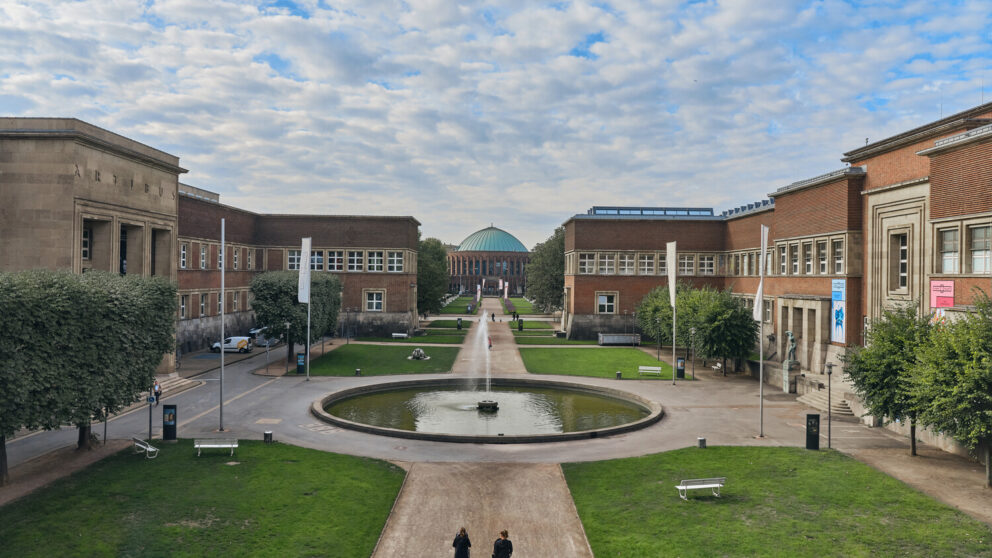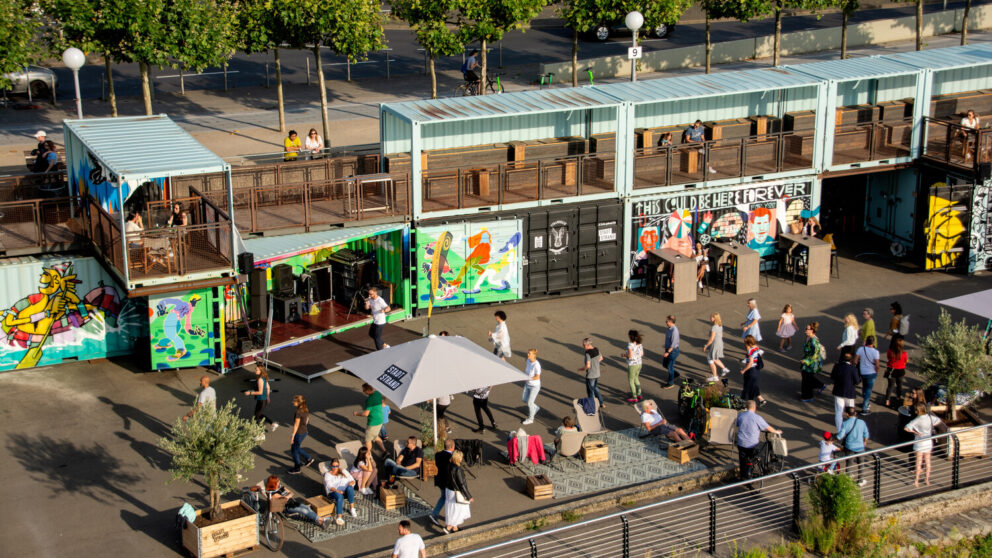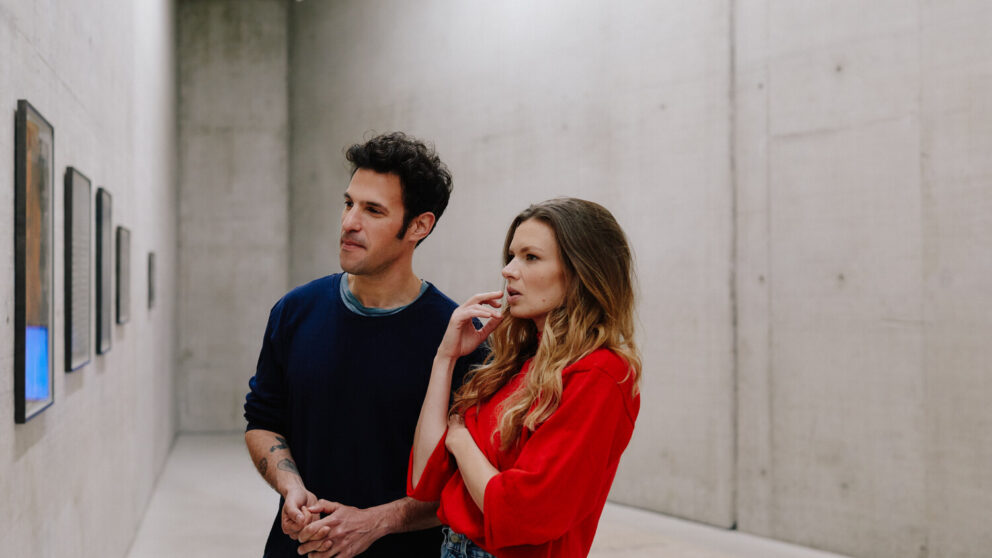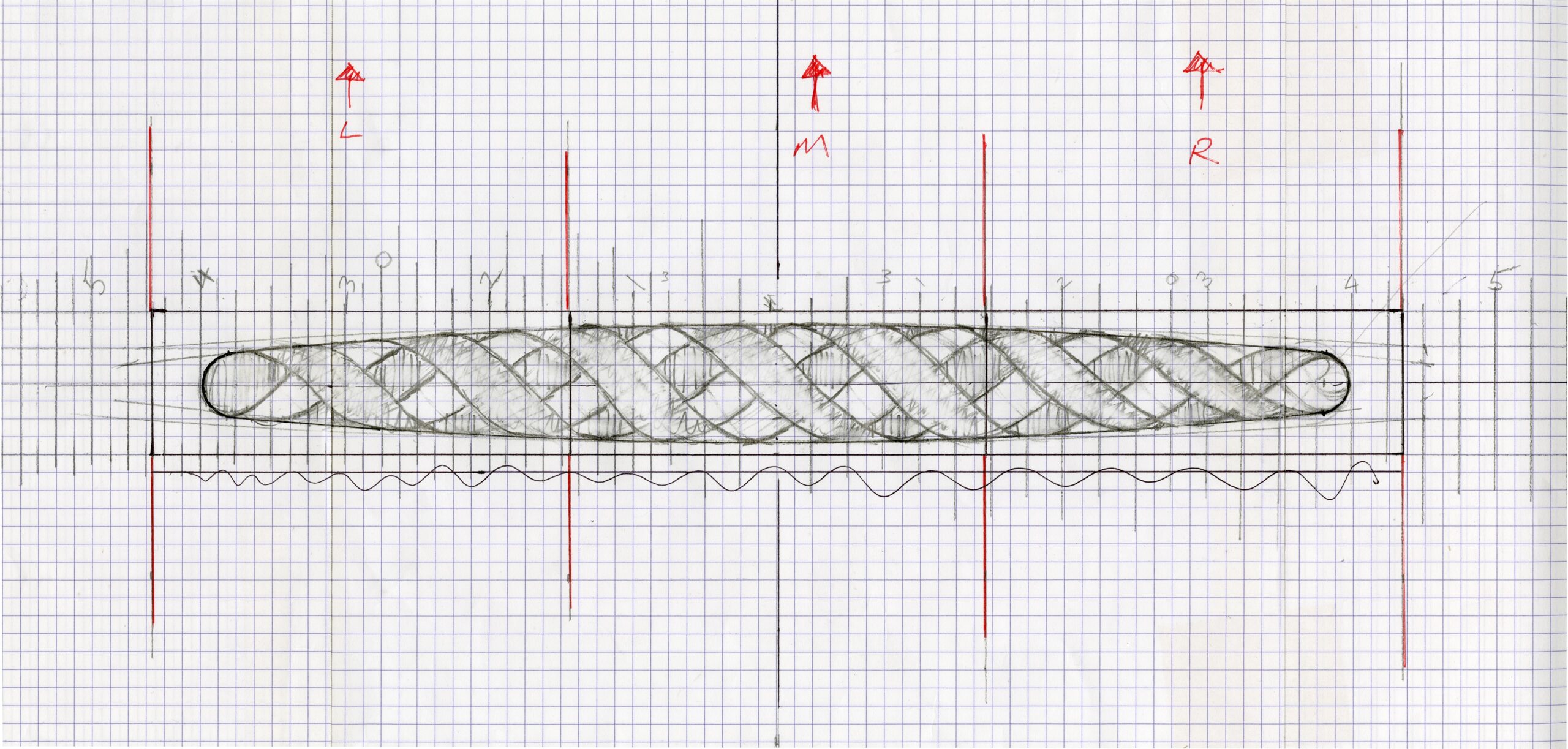
Six DC Open exhibitions you must see
Six DC Open exhibitions you must see
Open to the world of art?
The art scene in the Rhineland is world-famous. Especially in September, when the new exhibition season begins, one art event follows the next. Firmly inscribed in the scene's calendar are the DC Open, the gallery tour in Düsseldorf and Cologne, which will be celebrating its 14th anniversary with the upcoming edition. From September 3 to 5, 56 galleries, museums and off-spaces in both cities will show their exhibition highlights of the year. One-and-a-half-hour free (!) gallery tours will take small groups with a maximum of ten participants to the most exciting art venues in the two metropolises and let them explore them. Curious? Previews of all participating galleries will begin at 1 p.m. on Friday, Sept. 3, and continue into the evening at 9 p.m. On Saturday, the galleries will be open from 1 to 7 pm, and on Sunday from 1 to 5 pm. We have filtered out six Düsseldorf highlights of the DC Open for you.
Ando Future Studios
Exciting things are already happening where Japanese star architect Tadao Andō will build a new landmark for Düsseldorf in the coming years: Because the future construction site in the north of the city is Germany's largest interim use project: The Ando Future Studios, the interim name of the site, promise interdisciplinary encounters within the creative scene. As part of this year's DC Open, there will be three art exhibitions at the new cultural campus. Among them is the video installation "Eurydice" (2018) by Kandis Williams, shown for the first time in Düsseldorf, which is part of the Julia Stoschek Foundation's five-day art intervention "Out of Space - Düsseldorf Variation." Williams addresses the invisibility of black bodies in society in her two-channel video installation. In addition, "Solid with a Chance of Æroscaping" provides a stage for Ando Future Studios resident artists Daria Nazarenko, Aurel Dahlgrün and Tomas Kleiner. The central work, a collaborative effort by all three artists, draws on the site's history and incorporates retarded layout systems of the commercially used site, which once housed a car dealership, as industrial artifacts. Last but not least, Ukrainian photographer Vera Blansh presents "Aftertime," a photographic documentation of the war. Blansh's specialty is actually fashion, but in this exhibition she documents the Russian war of aggression on Ukraine in touching black-and-white photographs.
Gallery Max Mayer
"Tit for tat" is a principle of game theory. And it is the title of an exhibition at Galerie Max Mayer in Schmela Haus, for which artist Maximiliane Baumgartner has developed a new series of works. In her paintings and installations, Baumgartner deals with the interconnections between philanthropy and the art market, the associated neoliberal contexts, and the art market's growing interest in pedagogy. For the current exhibition, she worked, among other things, with H-paving stones, thus establishing a connection between the Schmela House designed by Aldo van Eyck in 1971 and the playgrounds for whose "reinvention" the Dutchman is famous. That Baumgartner responds situationally to the site of the exhibition with her works is not new. In the case of the Schmela Haus, however, it is particularly exciting. Gallery owner Max Mayer moved in here in 2020. The narrow multi-story house is considered Germany's first gallery building, built in 1971 as a combined gallery and residential building for the gallery owner Alfred Schmela, who was very influential at the time. In this respect, not only Maximiliane Baumgartner's exhibition, but also the exhibition venue are a must for art lovers.
Art & Thinkers
The stop at the gallery of Rainer Kunst and Meike Denker becomes a holistic sensual art experience. For in addition to the works on display, it is the lyrical sound work "The Fruit Changes, the Garden Remains" by artist Klara Kayser that captivates visitors. "Dreams, Return" is Klara Kayser's first solo exhibition at Kunst & Denker Contemporary and transforms the gallery into an allegorical garden where the daily sensory overload comes to an end and the viewer's attention is directed to their own inner self. In Klara Kayser's multidisciplinary works, which place phonetic and photographic elements with plastics and ceramics in an unexpected context, the concretely visible merges with dreams and memories. "DREAMS, RETURN!" demand, for example, the words formed from petals in the photograph "come back to me." In the four-part series "The Fruit Changes, the Garden Remains," the poems written by Kayser can only be experienced visually in the dark: as white silkscreen prints on reflective adhesive film, the works look like monochrome surfaces in daylight. In the dark, however, black writing emerges on a neon-lit background.
Gallery Konrad Fischer
The work of the Düsseldorf photographers Bernd and Hilla Becher is known worldwide. What is new, however, is that a building material is at the center of an exhibition dedicated to them. With 39 large-format individual images and two exemplary typologies, "Concrete" at Galerie Konrad Fischer brings into focus the industrial buildings photographed by Bernd and Hilla Becher, which were built primarily of concrete. The show reveals both the variety of industrial forms in the Bechers' oeuvre and the enormous versatility of the building material, whose massiveness not only recalls medieval fortresses and bunkers, but also makes open slender-limbed tower buildings possible. Like the famous Bechers, their lifelong friends and companions Dorothee and Konrad Fischer are an integral part of the international art scene. When they presented their first exhibition of Carl Andre in a small room in Düsseldorf's Neubrückstrasse in October 1967, Minimal Art and Conceptual Art were virtually unknown in Europe. Subsequently, avant-garde artists such as Richard Long, Bruce Nauman, Sol LeWitt, On Kawara, Lawrence Weiner, Hanne Darboven and Robert Ryman made their first European appearances at the art dealer couple, whose pioneering spirit had a decisive influence on the reception of art in Germany. Here, too, as in the case of Max Mayer, a visit is doubly worthwhile.
Benden & Ackermann
Hardly any couple in the art world had a greater auratic presence than Christo and Jeanne-Claude, and anyone who was once able to experience one of their works in the flesh can consider themselves lucky. Because the experience never lasted longer than two or three weeks. Then the covers fell off the Reichstag in Berlin, the pink polypropylene fabric of the "Surrounded Islands" off Miami and the floating jetties in Lake Iseo disappeared. "Nobody can buy these projects, nobody can own them, nobody can charge admission," said Christo, who liked to flirt with the fact that his ideas were completely "useless." Indeed, there was no practical or economic benefit, only the audacity of the thought: "Our work is about freedom," the two noted with pride. The fleeting and transient nature of the attractions was part of their beauty. Left for posterity, however, are a wealth of drawings, graphics, photographs, collages, some of which were created during the planning stage. These small works touch their viewers as artistic memories of phenomenal events and can be seen twice in Düsseldorf these days. On the one hand, at the DC Open in the Benden & Ackermann Gallery, and on the other hand, only a few days later, a comprehensive show opens in the Kunstpalast. There, the exhibition traces the art-historical development of Christo and Jeanne-Claude from the mid-1950s to the present day and presents the early artistic work created in France in the context of works by companions.
Since in the front
Another high profile artist in the DC Open program is Richard Deacon, winner of the Turner Prize, who is showing a drawing, six new sculptures and prints in an exhibition at the temporary exhibition space Da in die Front on Birch Street. The group of stainless steel sculptures, each displayed on its own stand, are reminiscent of abandoned shoes or footprints and are related to Deacon's references to tracks and traces as evidence of their respective times. In particular, the fossilized tracks of humans and animals served as inspiration for the Welshman. "The sculptures seemed to be both object and track," Deacon, who taught as a professor at the Kunstakademie in Düsseldorf from 2009 to 2015, says of his works shown here. The fact that the superstar Deacon, who had a major retrospective at Tate Britain in 2014 and has realized commissioned works in public spaces worldwide, has chosen to go to a well-hidden backyard in Düsseldorf-Flingern speaks well for him - and for the exhibition organizer. The sculptor Matthias Grotevent is the creator of the concept space Da in die Front and formulates here a new kind of interaction. Da an die Front is his very personal approach to entering into a collegial dialogue, with the statue forming the intersection of the works on display by various artists. Our insider tip!
Cover: There in the front; Richard Deacon, Shroud, 2018, ink and pencil on paper, 21 x 54 cm, photo: Richard Deacon

